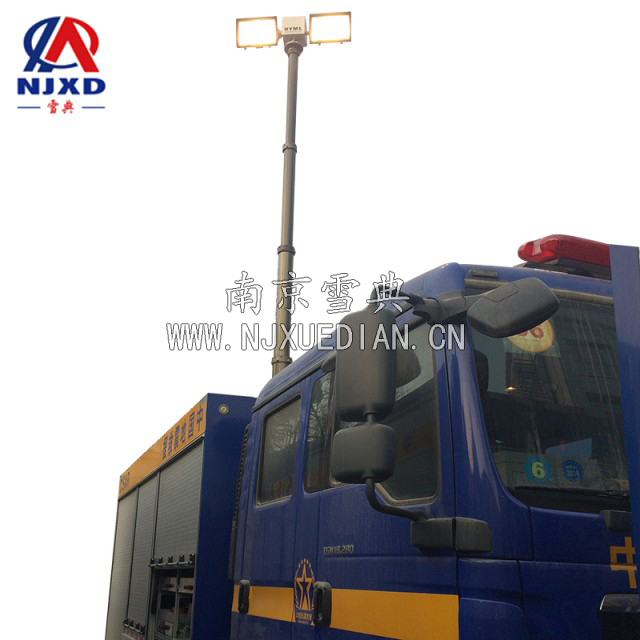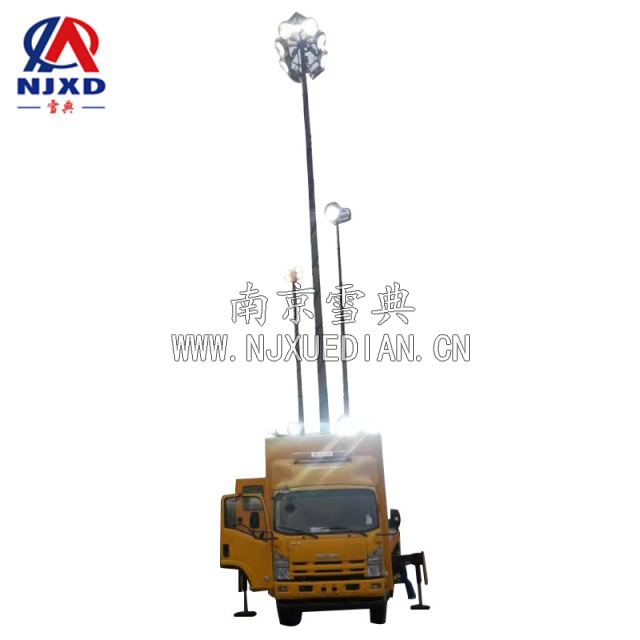NEWS
Lighting power density of lifting light pole
Time:2021-03-08 View:

Definition of lighting power density (LPD): The lighting installation power (including ballast and transformer power consumption) per unit area in the room or place of the building, unit: Watt/square meter.
LPD: Lighting Power Density
Prescribed meaning
GB50034-2013 specifies the LPD values of 108 commonly used rooms or places for seven types of buildings, and CJJ45-2006 also specifies 12 LPD values for four types of urban roads as mandatory provisions (except residential buildings) release must be strictly implemented.
LPD limit is a macro regulation made by the state according to the Energy Saving policy. Therefore, it is required that the actual LPD value in lighting design should be less than or equal to the maximum LPD limit specified in the standard. If it is equal, it means a "qualified" design; If it is exceeded, it is an "unreasonable" design. Therefore, designers are required to make efforts to optimize the scheme and strive to reduce the actual LPD value so as to make it less than or even much smaller than the specified LPD value, so as to achieve "good" or "excellent" energy-saving design.
Some designers do not perform illuminance calculation, and it is incorrect to use the LPD limit specified in the standard instead of illuminance calculation to determine the number of lamps, which violates the principle of energy conservation.

Measures
Measures to reduce actual LPD value in design
(1) What factors are the LPD value related?
For the expression of LPD, see formula (3):LPD = sigma/S (3)
Use the utilization coefficient to calculate and maintain the average illuminance (Eav) according to Formula (4):Eav = sigma φ * U * K/S (4)
For the expression of the average luminous effect of the selected light source (including ballast) in a room, see Formula (5): N s = sigma φ/Sigma p (5)
In the preceding formula:
Σ p -- power sum of light source (including ballast) installed in the room, W;
S -- room area, m2;
Σ φ -- the sum of the luminous flux emitted by the light source installed in the room, lm;
U-utilization coefficient;
K-maintenance coefficient;
N s-the average luminous efficiency of the light source (including ballast) in the room, lm/W.
Synthesis (3), (4), (5), after calculation: LPD = Eav/n s * U * K (6)
From formula (6), it can be seen that LPD is proportional to the illuminance value Eav, and inversely proportional to n s and U. To reduce the actual LPD value, appropriate illuminance should be taken in the design, and products with high efficiency of light sources, ballasts and lamps should be selected as far as possible, and the design scheme should be optimized.
(2) measures to reduce LPD
① The main measure is the measure discussed in the second part of this article, that is, selecting efficient light sources, ballasts and lamps are the most critical elements. If it is difficult to reach the LPD limit, the following measures can be taken.
② the calculated value of the designed illuminance meter can be lower than the specified illuminance standard value, but should not be lower than 90%.
③ the illumination around the working surface can be lower than that of the working surface, and it is generally allowed to reduce by one level (but not less than 200lx). If the entrance of the office and the area where the working surface cannot be placed, the illuminance can be reduced.
④ The illuminance of the channel and non-working area can be reduced to 1/3 or more of the illuminance of the working surface, which meets the actual needs and has obvious effect on reducing the actual LPD value.
⑤ for decorative lamps, LPD value can be calculated according to 50% of its power.
⑥ when conditions permit, the installation height of lamps can be appropriately reduced to improve the utilization coefficient.
Note: Unit of lux (lx) illuminance. The illuminance generated by the luminous flux equal to 1 lumen (lm) shining evenly on the surface of 1 square meter.
Relationship: 1lx (Lux) = 1lm (lumen)/square meter = 1cd (candela)/square meter
The illumination suitable for reading and sewing is about 600 lux.
